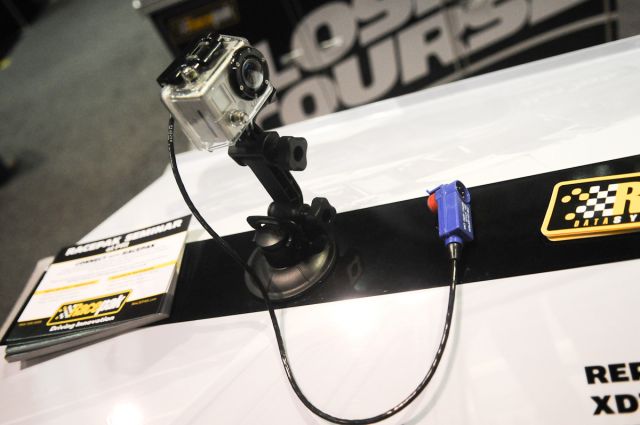There was a time not long ago that filming footage from on, inside, or underneath a race car would have involved a hefty amount of 200 MPH duct tape and a camcorder, but as technology does, those old school ways of filming got really small and surprisingly cheap in the form of pocket-sized cameras one could fasten or suction to the race car.
This newfangled technology initially served as a form of entertainment, allowing racers to share videos from aboard their race cars on the web for their friends and the world to see. But smart racers, realizing that any and all forms of data is immeasurably valuable, saw a use for the footage these small and affordable cameras could capture. Soon, racers were reviewing their runs on film, and even syncing the video to their on board telemetry to visibly “see” what was going on during a run. The problem was, there was no simple means of performing the sync.
The Racepak camera trigger cable uses a V-Net interface connector, which can be connected to the data recorder like any other sensor.
Racepak, a name virtually synonymous with data recording and telemetry in the motorsports world, sought to alleviate this problem. So here at PRI, the fruits of their labor are on display with this simple yet highly valuable connection that allows racers to sync multiple onboard GoPro or Replay cameras to their Racepak data recorders, thus delivering a perfectly synced video from the time the recorder is turned on until the time its turned off.
This was actually a really complicated product to design, because there are a lot of intricate wires involved to make it function between the camera and the data recorder. – Tim Anderson
When the recorder is turned on, be it in the staging lanes, before the burnout, or prior to staging, the camera(s) will be triggered on, automatically lining up the footage timeline with that of the data seen on the computer after the run.
The wire that Racepak has produced plugs into the GoPro or Replay camera, while the other end is connected to the data recorder using Racepak’s V-Net interface cable. Like any other sensor on the car, multiple cameras can be connected through the network of V-Net cables, whether you’re mounting one on the roof, pointed at the driver, forward of the rear suspension, or any other location.
While this connection may seem like a rather simple undertaking, Racepak’s Tim Anderson shared with us that it was anything but. “This was actually a really complicated product to design, because there are a lot of intricate wires involved to make it function between the camera and the data recorder.”
For more information on Racepak, visit them on the web at racepak.com.





















